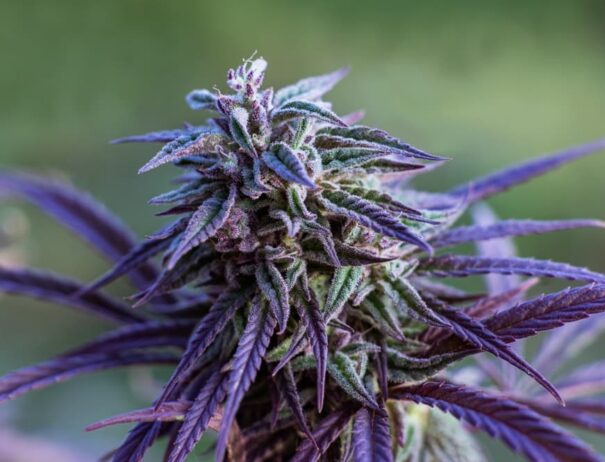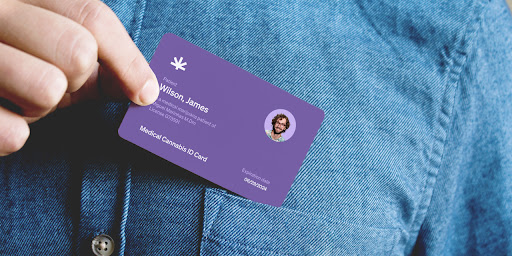How to Effectively Use CBD for Pain Relief
It burns, stings, stabs, and aches. It’s acute, chronic, dull, and sharp. It’s ubiquitous. It’s subjective and objective. It’s humbling. It’s unavoidable, and it’s exhausting.
Pain. Dealing with it is something we all experience. Whether it’s related to an injury or illness, once it’s made itself known, it’s hard to ignore. But that’s the point—it shouldn’t be ignored. Pain is a signal letting the body know something needs to be addressed.
Addressing that problem and managing the pain is where things can get tricky. Often, those struggling with pain management are pushed toward pharmaceuticals. Not only can those pharmaceuticals be expensive and highly addictive, they can also produce undesirable side effects like nausea, lethargy, and mental fog. Lately, research and anecdotal evidence have been pointing to a new, natural alternative to pharmaceuticals for pain management: CBD.
Using CBD for pain is quickly catching on as we learn more about how and why it works. Because of its anti-inflammation properties, it’s proving itself to be quite an effective pain-reducing compound. But before we dive into using CBD for pain relief, let’s look at what we know about pain.
What Is Pain and What Causes It?
When specific nerves, known as nociceptors, detect tissue damage in the body, they send information about it to the brain. This is how we feel pain. How we experience that pain depends on how effective the nociceptors were at sending their signals and how the brain chose to interpret those signals, which is why pain can be so subjective.
Though the cause of pain is not always known, especially in chronic conditions, we do know that one of the biggest causes of pain is inflammation. Inflammation is a part of the immune system’s process to defend the body. The pain it can impart can be constant, random, or only when the affected area is agitated.
Fortunately, CBD is a known anti-inflammatory, which is one of the reasons it can be so effective for reducing pain.
CBD and Pain Relief: How It Works
Cannabidiol, or CBD, is an active chemical compound found in flower. Generally extracted from hemp, the federally legal, non-intoxicating form of flower, its anti-anxiety and anti-inflammatory effects are quickly making it a household item. Science is still digging into everything it can offer us, but we’re starting to understand how and why using CBD for pain can be so effective.
CBD interacts with our endocannabinoid system (ECS), a communication system that’s responsible for maintaining internal balance within the body. By blocking or binding to the receptors of the ECS, CBD can reduce pain, inflammation, and anxiety. That’s because it prefers to bind to the ECS receptor most prevalent in the immune system: CB2. Stimulating CB2 reduces the effects of cytokines (pro-inflammatory molecules), leading to reduced inflammation. On top of that, CBD can inhibit an eicosanoid enzyme called COX2 that contributes to the process of inflammation.
Using CBD for Pain
The amount of CBD products available can make finding the right one for your pain management a bit overwhelming. Plus, apart from product type, you also have to consider product make up and whether you want a CBD isolate or a broad- or full-spectrum option. Luckily, science can help make those decisions for you.
Research shows that CBD with a little THC, like you find in full-spectrum products, can be more effective at treating pain than a CBD isolate or a broad-spectrum product, neither of which contains THC. That’s because it appears CBD is best for helping with inflammatory pain, while THC is best for central and neuropathic pain. Using a full-spectrum CBD product allows you to take advantage of both—plus all the other phytonutrients in hemp—resulting in a therapeutic synergy known as the entourage effect. (Don’t worry—because CBD products liked infused drinks and oils are extracted from hemp, there will never be enough THC content to get you high.)
As far as product type goes, CBD topicals and sublingual oils are ideal for effective pain management. Topicals absorb into the skin, so you can apply your full-spectrum CBD directly onto your pain point for targeted relief. Typically, you only have to wait a few minutes before you start to feel the effects. Sublingual oils are better if you’re looking for full-body effects. The medicinal compounds in the oil are absorbed into your bloodstream through the capillaries under your tongue, quickly dispersed to provide all-over relief. Like topicals, sublingual CBD oil usually takes only a few minutes before you start to feel it working.
Avoiding CBD Obstacles
One obstacle you might encounter when using CBD for pain is finding a quality product that actually contains the ingredients and potency listed on the label. Because the industry is still largely unregulated, there are a lot of mislabeled and counterfeit products on the market, some of which don’t even have CBD in them. Before getting started with CBD, check for third-party lab results so you can be sure what you’re consuming is what you’re expecting.
The easiest way to avoid this issue is by making your CBD oil or topical at home. Contrary to what you might think, it’s a pretty simple process these days thanks to countertop machines like the LEVO II.
Instead of buying a finished CBD product like a topical or sublingual oil, opt for the physical full-spectrum CBD flower. The LEVO II has an herb pod that will activate it, and then you can use that activated flower to infuse the oil of your choice. This way, you can control every ingredient that goes into the oil, as well as the potency.
You can also use the LEVO II to make CBD topicals at home. Your skin absorbs 60% of what you put on it, so knowing the ingredients behind your CBD topicals is just as important as knowing the ingredients behind your CBD oils. Using the LEVO II to make your CBD topicals puts you in control of those ingredients, so you know exactly what you’re putting on your body.
Not to mention, the LEVO II also gives you more control over the cost of pain management by saving you lots of money. On average, full-spectrum CBD oils cost $0.13 per milligram. So, a 300mg tincture bottle will cost you roughly $45 with tax.
If you make CBD oil at home with the LEVO II, you only need one cup of your preferred type of oil (like coconut oil) and 3 grams of full-spectrum CBD flower to yield 300mg of CBD oil. With 3 grams of full-spectrum CBD flower costing an average of $22 in Colorado (LEVO’s homebase!), that’s a savings of +50%!
CBD for Pain Summary
Science is still digging into the benefits of using CBD for pain relief, but what we know so far is promising.
- By blocking or binding to the receptors of the endocannabinoid system, CBD can reduce pain, inflammation, and anxiety. On top of that, CBD can inhibit an eicosanoid enzyme called COX2 that contributes to the process of inflammation.
- Research shows that CBD with a little THC, like you find in full-spectrum products, can be more effective at treating pain because it appears CBD is best for helping with inflammatory pain, while THC is best for central and neuropathic pain.
- CBD topicals and sublingual oils are ideal for effective pain management. Topicals absorb into the skin, so you can apply your CBD directly onto your pain point for targeted relief. Sublingual oils are better if you’re looking for full-body effects.
With industry regulations still lacking, your most effective option could be to make your CBD oil or topical at home with an easy-to-use machine like the LEVO II. By making your CBD products at home, you get to be in charge of the ingredients and the potency, so you know exactly what you’re putting in and on your body. On top of the improved quality, making your CBD oil at home with the LEVO II also saves you money. Pain management just got a whole lot easier. (And cheaper!)
SOURCES

Get Your Free eBook!
Download our FREE resource, The Ultimate Edibles Guidebook, full of recipes, infusion tips and everything you need to make your first batch of edibles today!



